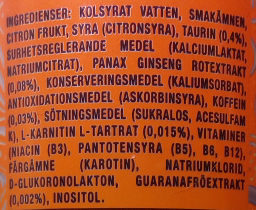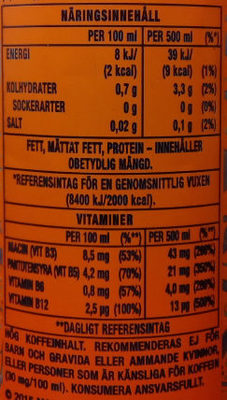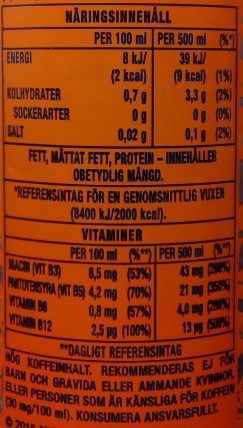Monster Energy Ultra Sunrise - 500 ml
This product page is not complete. You can help to complete it by editing it and adding more data from the photos we have, or by taking more photos using the app for Android or iPhone/iPad. Thank you!
×
Streckkod: 5060335635747 (EAN / EAN-13)
Vanligt namn: Kolsyrad energidryck med taurin, ginseng, L-karnitin och B-vitaminer med sötningsmedel
Kvantitet: 500 ml
Förpackning: en:Metal, Återvinningsbara metaller, Aluminium
Varumärken: Monster Energy, Monster
Kategorier: Drycker, Kolsyrade Drycker, en:Artificially sweetened beverages, en:Unsweetened beverages, Energidrycker
Etiketter, certifieringar, utmärkelser: en:Not advised for specific people, en:Not advised for children and pregnant women
Tillverknings eller bearbetningsplats: EU
Länk till produktsidan på producentens officiella webbplats: https://www.monsterenergy.com/se/sv/prod...
Länder där såld: Sverige
Matching with your preferences
Miljö
Förpackning
Transportation
Report a problem
Datakällor
Produkt tillagd den av olofolleola4
Senast ändrad produktsida på av packbot.
Produktsida också redigerad av akitainu, openfoodfacts-contributors.









